In es6, let is a keyword used to declare variables; this keyword is only valid in the declared code block. An error will be reported outside the specified code block, and there is no scope promotion. Repeated declarations are allowed, and there is a temporary dead zone. The syntax is "let name=value;".

The operating environment of this tutorial: Windows 10 system, ECMAScript version 6.0, Dell G3 computer.
What is let in es6
let is a command in es6 to declare a variable. It is only valid in the code block in which it is declared. If this code block is left, an error will be reported. It is also very suitable for for loops. The value of i in the loop only takes effect in the loop statement and cannot be obtained outside.
The var command declares a global variable, i points to the global variable, and only the last value will be output. Let only takes effect in the loop statement block. Each loop will re-declare an i, so the corresponding value can be obtained every loop.
The variable in the for loop is the parent scope and is not in the same scope as the variable (child scope) defined by let in the loop body.
For example:
//1.在自身所在代码块中有效
{
let a = 1;
var b = 2;
}
console.log(b); // 2
console.log(a); // a is not defined
//2.在for循环语句块中有效
for(var i=0;i<10;i++) {
//...
}
console.log(i); // 10
for(let j=0;j<10;j++) {
//...
}
console.log(j); // j is not defined
var arr = [];
for(var a=0;a<10;a++) {
arr[a] = function () {
console.log(a);
}
}
console.log(a[4]); // 10
for(let b=0;b<10;b++) {
arr[b] = function () {
console.log(b);
}
}
console.log(b[4]); // 4
// 3.for循环的变量和循环体内的变量
for(var i=0;i<10;i++) {
let i = 'fed';
console.log(i);
}
/*
* 结果是
* fed
* fed
* fed
*/let command does not have scope promotion
The var command will have scope promotion. Before it is declared, it is undefined. If it is not declared, there will be a default Worth it. Variables defined by let must be used after declaration.
console.log(fa); // undefined var fa = 1; console.log(fb); // fb is not defined let fb = 2;
let has a temporary dead zone
The "temporary dead zone" (TDZ) refers to the provisions of ES6, if there are let and const commands in the block , the variables declared by these two commands have formed a closed scope. Variables declared before this will report an error.
For example: A global variable is declared below, but let declares another variable in the block-level scope.
var food = 'apple';
if(typeof 'str' == 'string') {
food = 'banana'; // Uncaught ReferenceError: food is not defined
let food;
console.log(food); // undefined
food = 'orange';
console.log(food); // orange
}Note: There will be some bad things about the temporary fourth area.
Typeof detection is unsafe
typeof x; // Uncaught ReferenceError: x is not defined let x;
Duplicate declarations are not allowed
In short, it is not allowed to declare two identical variables in the same scope.
For example:
{
let a = 1;
var a = 2; // Uncaught SyntaxError: Identifier 'a' has already been declared
}
// 或者
{
let b = 1;
let b = 2; // Uncaught SyntaxError: Identifier 'b' has already been declared
}Note: Parameters cannot be declared repeatedly within function parameters, otherwise an error will be reported.
function wait(x,y) {
let x = 1; // Uncaught SyntaxError: Identifier 'x' has already been declared
let y = 2; // Uncaught SyntaxError: Identifier 'y' has already been declared
}
wait(3,5);Top-level object
Before ES6, the properties of top-level objects were consistent with global variables, which led to many problems.
Only by running can errors be caught, and errors cannot be detected from the beginning.
Top-level objects can be read and written at any time and anywhere, so they are not conducive to modular programming.
window actually refers to the browser window, and the top-level object has an entity meaning.
So es6 has improved one thing, that is, global variables declared by let and const do not belong to the properties of the top-level object.
For example:
var a = 1; let b = 2; console.log(window.a); // 1 console.log(window.b); // undefined
Learn what you have learned and apply the let command
As the old saying goes: if you learn, you can use it everywhere; if you don’t learn, it means nothing. So I wrote a small example about let.
This is a case of tabs. Before, we had to define btns[i].index = i, but now it is much more convenient to use the let command.
.tab {
width: 300px;
height: 30px;
border: 1px solid #fff;
}
.tab > span {
float: left;
display: block;
width: 98px;
height: 28px;
line-height: 28px;
text-align: center;
border: 1px solid #aaa;
cursor: pointer;
}
span.active {
color: #fff;
background-color: #f00;
border: 1px solid #f00;
}
.content, .content > p {
width: 300px;
height: 300px;
}
.content > p {
display: none;
border: 1px solid #aaa;
}
p.active {
display: block;
}
<div class="tab">
<span class="active">1</span>
<span>2</span>
<span>3</span>
</div>
<div class="content">
<p class="active">1的内容</p>
<p>2的内容</p>
<p>3的内容</p>
</div>
let btns = document.querySelectorAll('.tab span');
let contents = document.querySelectorAll('.content p');
for (let i = 0; i < btns.length; i++) {
btns[i].onclick = function() {
for (let j = 0; j < btns.length; j++) {
btns[j].className = '';
contents[j].className = '';
}
this.className = 'active';
contents[i].className = 'active';
}
}[Related recommendations: javascript video tutorial, web front-end】
The above is the detailed content of What is let in es6. For more information, please follow other related articles on the PHP Chinese website!
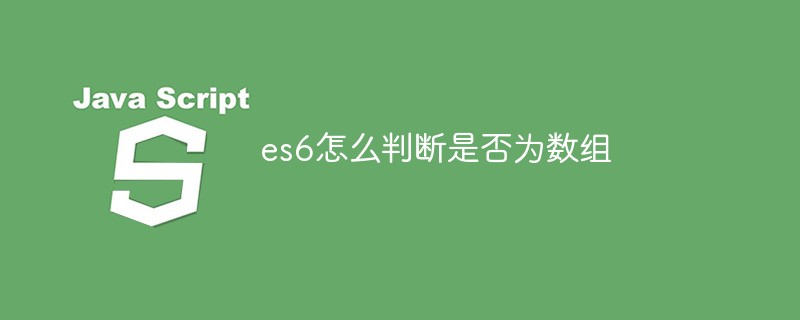 es6怎么判断是否为数组Apr 25, 2022 pm 06:43 PM
es6怎么判断是否为数组Apr 25, 2022 pm 06:43 PM在es6中,可以利用“Array.isArray()”方法判断对象是否为数组,若判断的对象是数组,返回的结果是true,若判断对象不是数组,返回的结果是false,语法为“Array.isArray(需要检测的js对象)”。
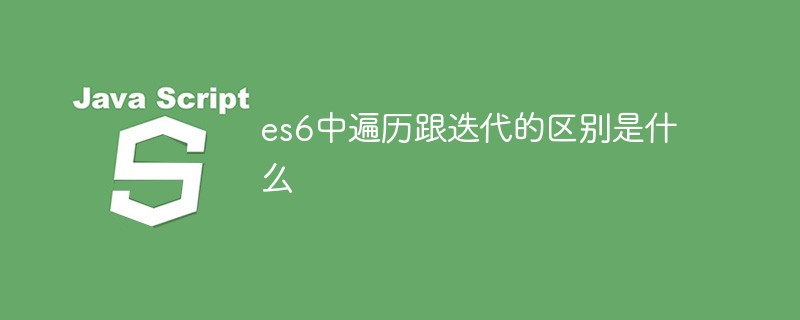 es6中遍历跟迭代的区别是什么Apr 26, 2022 pm 02:57 PM
es6中遍历跟迭代的区别是什么Apr 26, 2022 pm 02:57 PMes6中遍历跟迭代的区别是:遍历强调的是要把整个数据依次全部取出来,是访问数据结构的所有元素;而迭代虽然也是依次取出数据,但是并不保证取多少,也不保证把所有的数据取完,是遍历的一种形式。
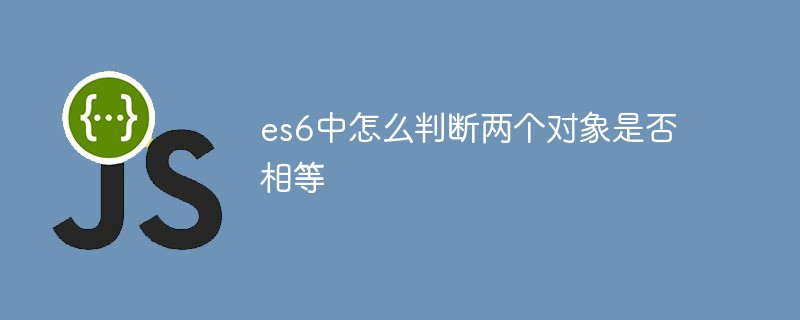 es6中怎么判断两个对象是否相等Apr 19, 2022 pm 03:34 PM
es6中怎么判断两个对象是否相等Apr 19, 2022 pm 03:34 PM在es6中,可用Object对象的is()方法来判断两个对象是否相等,该方法检测两个变量的值是否为同一个值,判断两个对象的引用地址是否一致,语法“Object.is(对象1,对象2)”;该方法会返回布尔值,若返回true则表示两个对象相等。
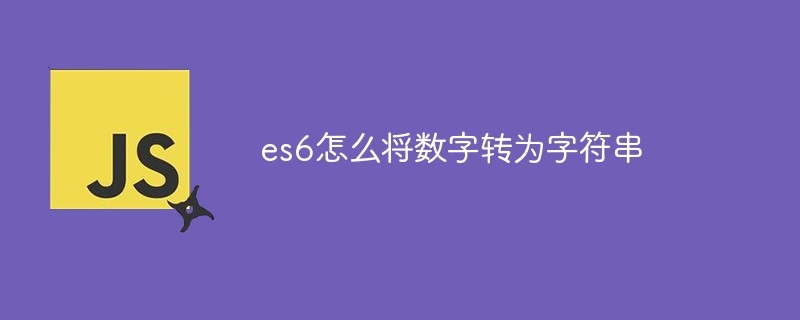 es6怎么将数字转为字符串Apr 19, 2022 pm 06:38 PM
es6怎么将数字转为字符串Apr 19, 2022 pm 06:38 PM转换方法:1、利用“+”给数字拼接一个空字符,语法“数字+""”;2、使用String(),可把对象的值转换为字符串,语法“String(数字对象)”;3、用toString(),可返回数字的字符串表示,语法“数字.toString()”。
 es6中assign的用法是什么May 05, 2022 pm 02:25 PM
es6中assign的用法是什么May 05, 2022 pm 02:25 PM在es6中,assign用于对象的合并,可以将源对象的所有可枚举属性复制到目标对象;若目标对象与源对象有同名属性,或多个源对象有同名属性,则后面的属性会覆盖前面的属性,语法为“Object.assign(...)”
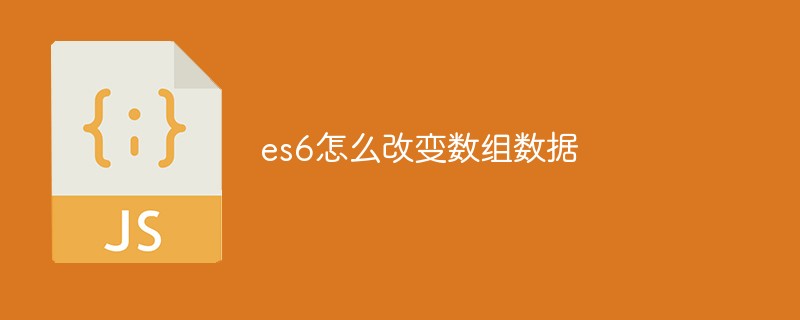 es6怎么改变数组数据Apr 26, 2022 am 10:08 AM
es6怎么改变数组数据Apr 26, 2022 am 10:08 AM改变方法:1、利用splice()方法修改,该方法可以直接修改原数组的内容,语法为“数组.splice(开始位置,修改个数,修改后的值)”;2、利用下标访问数组元素,并重新赋值来修改数组数据,语法为“数组[下标值]=修改后的值;”。
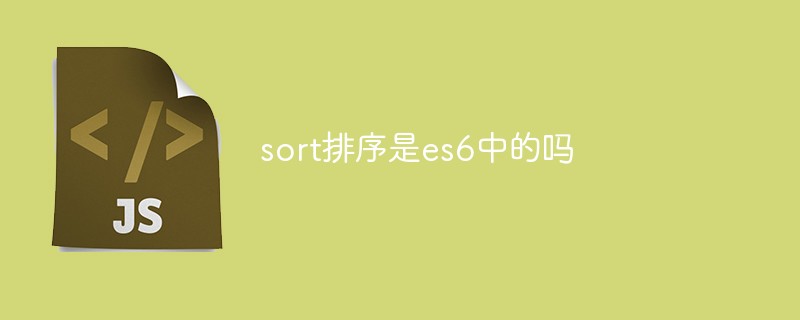 sort排序是es6中的吗Apr 25, 2022 pm 03:30 PM
sort排序是es6中的吗Apr 25, 2022 pm 03:30 PMsort排序是es6中的;sort排序是es6中用于对数组的元素进行排序的方法,该方法默认不传参,按照字符编码顺序进行排序,排序顺序可以是字母或数字,并按升序或降序,语法为“array.sort(callback(a,b))”。
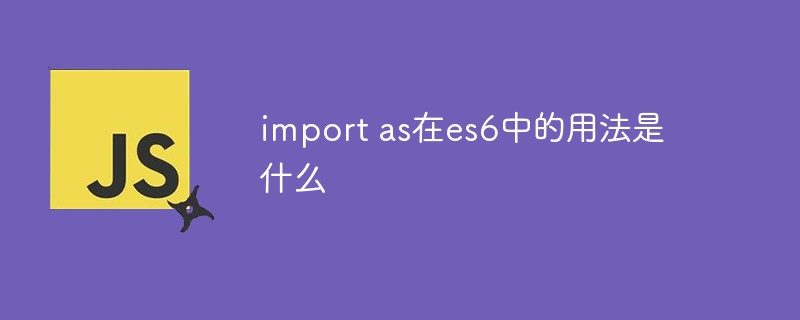 import as在es6中的用法是什么Apr 25, 2022 pm 05:19 PM
import as在es6中的用法是什么Apr 25, 2022 pm 05:19 PM在es6中,import as用于将若干export导出的内容组合成一个对象返回;ES6的模块化分为导出与导入两个模块,该方法能够将所有的导出内容包裹到指定对象中,语法为“import * as 对象 from ...”。


Hot AI Tools

Undresser.AI Undress
AI-powered app for creating realistic nude photos

AI Clothes Remover
Online AI tool for removing clothes from photos.

Undress AI Tool
Undress images for free

Clothoff.io
AI clothes remover

AI Hentai Generator
Generate AI Hentai for free.

Hot Article

Hot Tools

Safe Exam Browser
Safe Exam Browser is a secure browser environment for taking online exams securely. This software turns any computer into a secure workstation. It controls access to any utility and prevents students from using unauthorized resources.

SublimeText3 Linux new version
SublimeText3 Linux latest version

VSCode Windows 64-bit Download
A free and powerful IDE editor launched by Microsoft

Atom editor mac version download
The most popular open source editor

SublimeText3 Mac version
God-level code editing software (SublimeText3)







